By Kevin Lally and Daniel Loria
When Sideways opened in four theaters on October 22, 2004, no one expected the film to linger much beyond that year’s awards season. The movie did very well in its opening weekend, grossing a little over $200,000 and scoring the highest per-screen average in the market. And it had legs. Word of mouth helped expand the film to become a hit for Fox Searchlight, crossing over from art house theaters to multiplex screens nationwide in what proved to be a 30-week theatrical run. An Academy Award for Best Adapted Screenplay and Golden Globe for Best Picture—Comedy or Musical punctuated a successful $71.5 million run. The film’s true cultural impact, however, would be felt well beyond cinema screens for years to come.
Fifteen years on, the wine world is still recovering from what has been called the “Sideways Effect,” when consumers took note of the protagonist’s strong affinity for pinot noir and even stronger aversion to merlot. News reports went on to document a dramatic uptick in the sales and production of pinot noir grapes in the United States, while merlot suffered under the weight of Paul Giamatti’s infamous line in the film: “I am not drinking any fucking merlot!”
“I was working at [Michelin-starred] The Modern in New York City at the time—everyone wanted pinot noir and no one wanted merlot,” recalls Jessica Bell, who left a career in investment banking to become a sommelier during that period. “This movie had just pushed this craze … [it] turned the entire wine market on its head.”
All these years later, it’s striking that a film that grossed under $100 million would have such a lasting effect on consumer choices. It also revealed an important potential for cinema professionals across the country: Wine drinkers like going to the movies, yet the movies were hardly a venue for wine drinkers at the time.
Alcohol service has rapidly expanded its footprint at U.S. cinemas over the last two decades, going from a niche offering to a full-blown trend. “Our first true bar opened in 2002 as part of a casual-dine concept on Long Island, New York,” says Patrick Micalizzi, V.P. of food and beverage at National Amusements’ Showcase Cinemas. “Eighteen years later, a majority of our cinemas offer liquor, beer, and wine service in our restaurants, dine-in operations, and walk-up lobby bars. The demand for adult beverages at the movies continues to climb.”
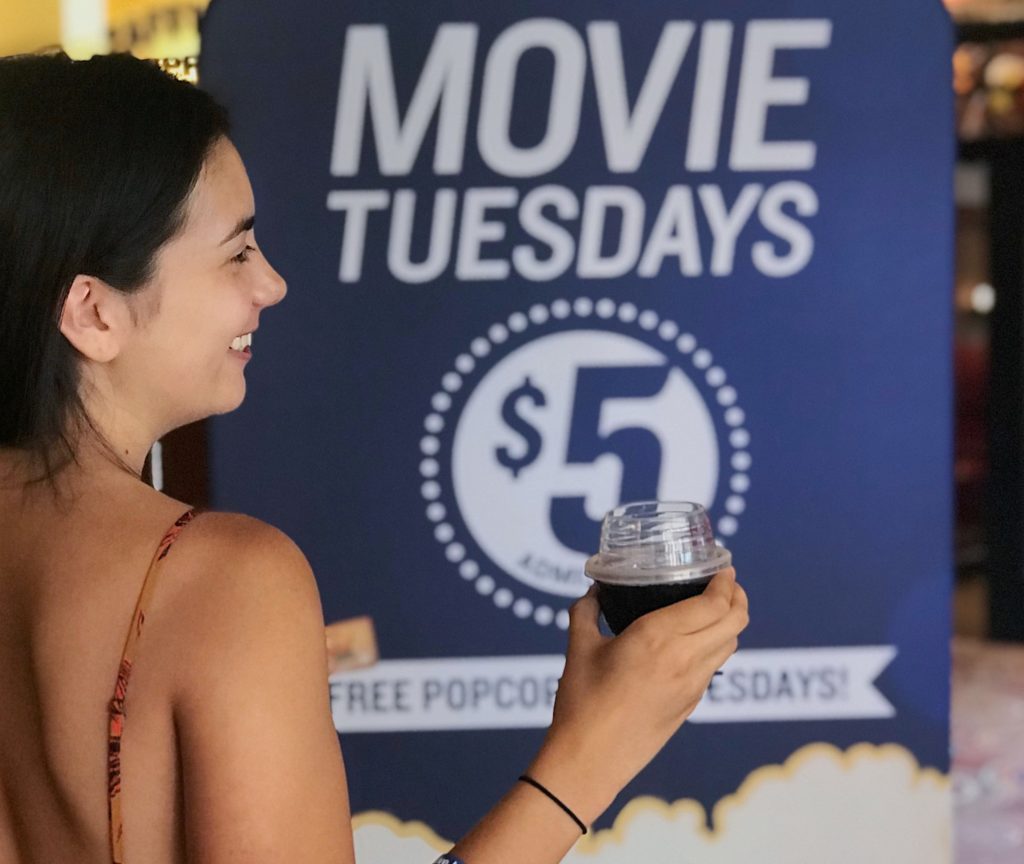
Larry Etter, SVP at Malco Theatres and director of education of the National Association of Concessionaires, says alcohol service has become more than a trend, calling it “almost obligatory” when it comes to new builds and renovations. “The new era of cinema now must include food and beverage offerings, hence, bigger menus and adult beverages.”
As Etter notes, expanded menus and alcohol service have emerged as two of the biggest trends at U.S. cinemas over the last decade. These have presented both new opportunities and challenges as cinema concessionaires add alcohol service, says Rob Novak, V.P. of concessions and F&B at Marcus Theatres. “The cinema experience is vastly different than it was 10 years ago. In addition to traditional popcorn and soda, guests can now order wine and a cheeseburger,” he says. “But serving wine has a few challenges. Wine drinkers are accustomed to receiving their brand of choice in a glass with a stem. The cup holders in a theater, however, are not designed for stemware. Wine served in a more theater-friendly plastic cup has been the resolution, and guests are now starting to get more comfortable with that approach, but it was a bit of an adjustment.”
That specific challenge is what inspired Jessica Bell to create HaloVino, a reusable narrow-rimmed wine glass designed to enhance the wine experience at entertainment venues. “You go to an art show or an opening night at a gallery, and wine is always part of the experience,” she says. “Wine has to be delivered in a way that feels and tastes like wine. So many food-service operators offer wine in a flimsy, wide-rimmed cup and wonder why wine sales are so low. You could put the best wine in that cup, and it won’t feel or taste like wine to most wine drinkers. I liken wine drinkers’ reaction to getting wine in a cheap plastic cup to that of a beer drinker getting warm, flat beer. They may still drink it, but they won’t enjoy the experience.”
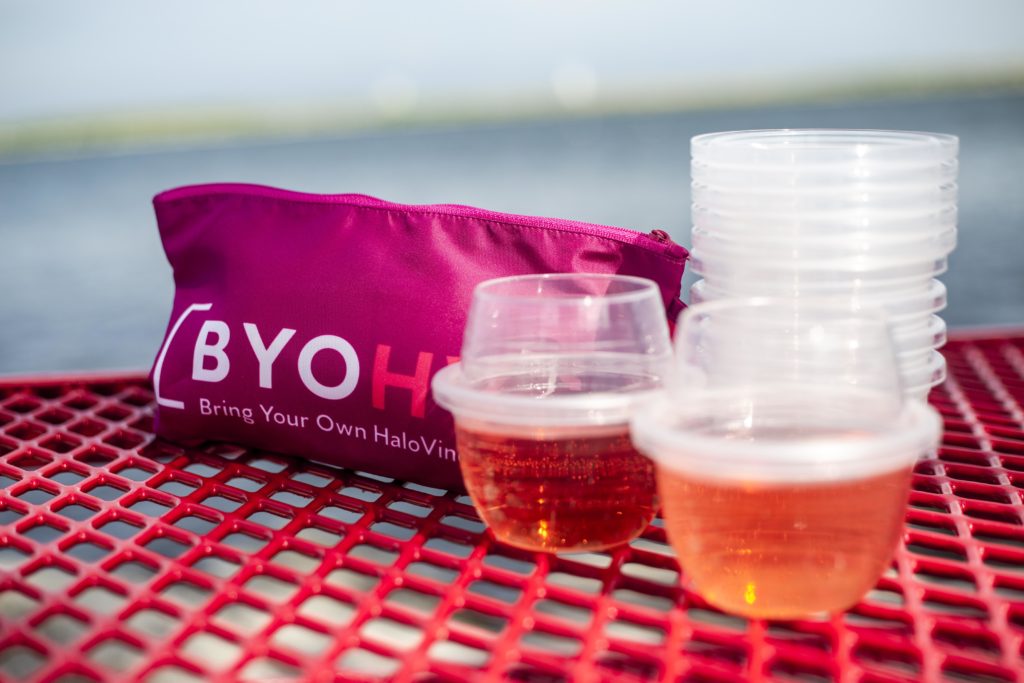
That cinema was, until recently, a largely unexplored wine market within the arts sector meant that trial and error by exhibitors was to be expected. As many cinemas have already discovered, simply putting alcoholic beverages on a menu isn’t enough. Whenever an adult beverage is incorporated into a cinema’s overall F&B strategy—whether that entails pouring a craft beer on tap or offering a special cocktail with a movie tie-in—it goes from being a menu item to being part of the moviegoing experience. When executed successfully, it becomes part of your cinema’s unique moviegoing experience.
Lounges and bar areas play an important role in wine’s consumer appeal at the cinema. A glass of wine can serve as a pre-date drink before a couple enters an auditorium or be part of a post-movie conversation. “Movie theaters are a social place, and our lounges and bars should feel the same,” Novak advises. “We create a variety of specialty drinks that oftentimes align with movies. Large-screen TVs showcase sports and create community among guests and associates; oversized bar games such as giant Scrabble get guests mingling and talking; and our bartenders help create a fun, relaxed environment as part of your visit.”
One time-consuming task that comes with introducing wine service is securing a liquor license. “Every municipality has a different structure and protocol for obtaining a permit to sell,” says Etter. “Some communities welcome the new upgrades in wine service; others fight to keep alcohol out of a ‘family’ venue.”
Once a liquor license is obtained, exhibitors must then tackle challenges like incorporating a bar area or lounge space, securing storage for bottles, and boosting staffing and training. “Serving alcohol carries a greater level of responsibility and requires additional training and staffing,” notes Novak. “Establishing stringent protocols surrounding carding and further enforcing them through voluntary third-party ‘checks’ ensures we continue to uphold the policies.”
“It’s an entirely new business added to the cinema-management process,” agrees Etter. “Let’s not forget that an open bottle of wine has a very short shelf life. When selling by the glass, it has to be sold within 48 hours. Beer, spirits, soda syrup, candy—none of these have the limited time to serve like wine.”
Many districts in the United States require a full menu and kitchen space when granting a liquor license, which means that wine’s growth in cinemas has been in parallel to the rise of dine-in cinemas and expanded concessions in the United States. Marcus Theatres first introduced alcohol service in May 2007, with the opening of the Majestic Cinema of Brookfield in Wisconsin. The location offered several in-theater dining concepts and an expanded menu, opening the door to cocktails, beer, and wine in the circuit. “As a result, more than three-quarters of our properties now serve alcohol, and offerings have grown. For example, we now feature 12 to 20 different beers on tap and nearly a dozen types of bottled wine,” says Novak.
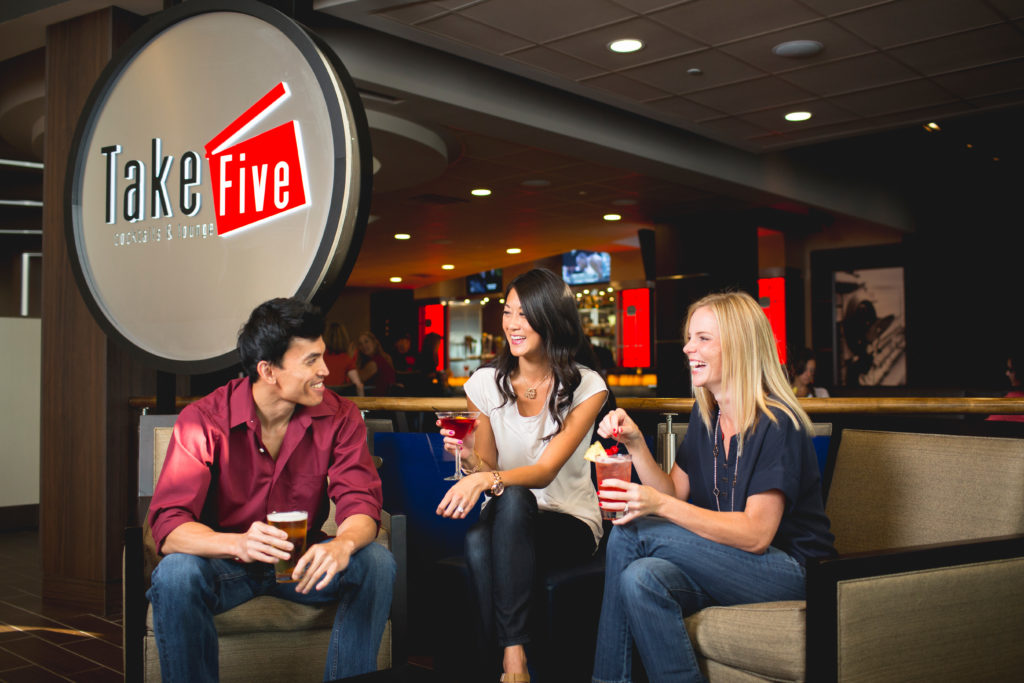
Curating a wine list can become the key difference maker in ensuring wine’s success at a cinema. At Marcus Theatres, Novak says the circuit’s wine selections are directly tied to its overall F&B strategy.
“We conduct an evaluation of the alcoholic beverages we serve on an annual basis, and wine selection is part of this overall process,” he says. “We meet with major wine distributors to learn about current trends and consult with our third-party marketing firm during the menu redesign period. We apply those learnings and ensure that we have a wide variety of offerings at various price points. Together these are the drivers for making necessary adjustments to the wine selection on our menu.”
Janet Michels, director of purchasing at Studio Movie Grill, the country’s leading dine-in-focused circuit, says her company’s wine selection process is “a collaboration of our beverage manager, operations team, and our owner. We typically feature wines that are familiar to the guests. Our guests tend to purchase wines based on names they are familiar with and that they perhaps drink at home.” Studio Movie Grill also offers its own signature branded wines, developed about five years ago with a California winemaker. “We have a chardonnay, a cabernet, and one white table wine, called Betty’s Blend, which is named after our owner’s wife,” Michels says.
Like Studio Movie Grill, popular independent Brooklyn dine-in theater Nitehawk Cinema has cultivated its own branded wine, in collaboration with Brooklyn Winery. “We started our partnership with them a few years ago, at first by having their Finger Lakes Riesling on our menu,” says Nitehawk Prospect Park beverage director Nick Dodge. “We really enjoy working with local craft producers and have been lucky to be operating in New York during a huge growth of amazing New York–made beverages. We are pretty spoiled to be surrounded by so many talented producers, so we had a good working relationship with Brooklyn Winery and are big fans of everything they have been doing there. We were at the winery for a tasting of new vintages a few years ago, and the idea came up of working with them on our own proprietary blend.”
The process took nearly a year. In the interim, the Nitehawk began working with the winery’s graphic designer to make its own label for the wine. “It was branded with our name and logo on the bottle. The first blend we made we simply called Nitehawk Cinema x Brooklyn Winery Red Blend no.1,” says Dodge. “Because this was a special blend and not something they regularly produced, we were able to sell it only as long as supplies lasted. It was a popular wine choice for our customers and really well received. We were completely sold out after a few months.”
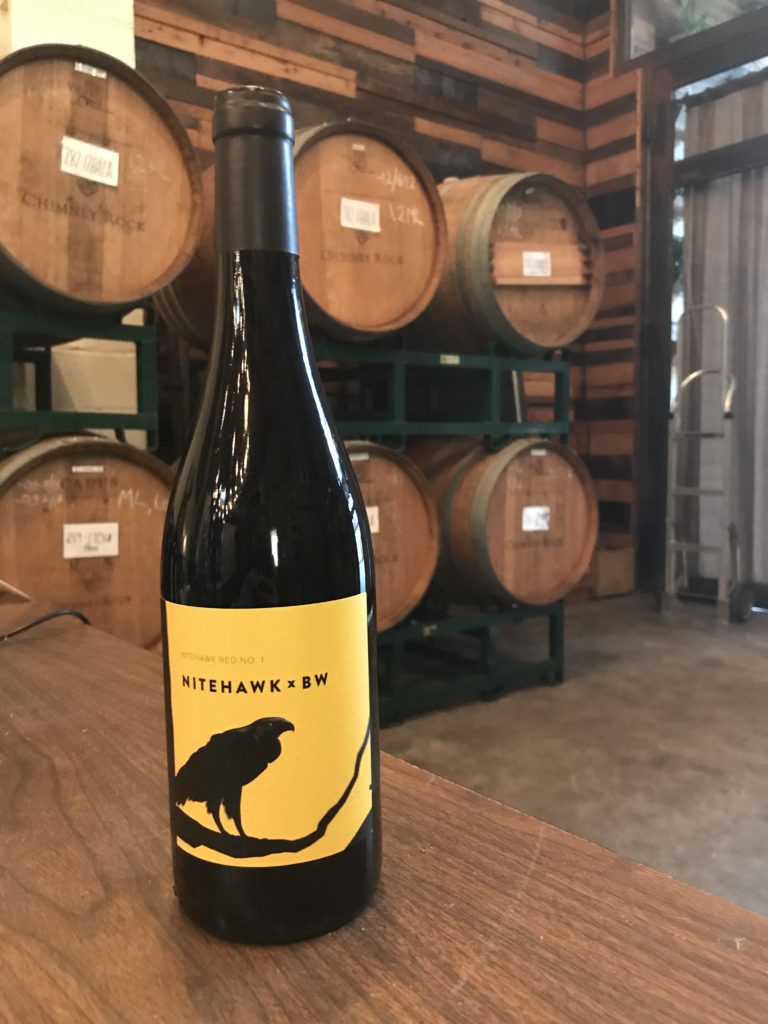
“Although we are sold out of our Nitehawk Winery blend, we still have an amazing selection of wines at our theaters, sales of which account for around 20 percent of our alcoholic beverage sales,” notes Dodge. “In particular in the last few years, we have been focusing on smaller producers that utilize sustainable, natural, and organic practices. One of the things about Nitehawk that we like to think sets us apart from much of our competitors is the quality of the products that we serve, and I think our wine program is a great example of that. We have a small but curated list that focuses on quality and value. We have some old-world classics like a Provençal rosé, Italian prosecco, and a German Riesling, and some modern innovators like a biodynamic Argentinian pinot noir, a natural-fermentation Alvarelhão from Lodi [California], and even a few skin contact or orange wines. We have been really thrilled at our customer response, and wine sales have been growing over the last few years more than any other beverage category.”
For dine-in cinemas like the Nitehawk and Studio Movie Grill, wine pairing is part of the experience of enjoying dinner at the movies. “We always make sure that we have a wine on our menu that pairs well with each food category,” says Michels. “In fact, we will send [moviegoers] a dedicated email with pairings for both wine and spirits.” Among her personal favorite pairings are “edamame with K-J Avant Chardonnay, sriracha chicken sliders with Freakshow Cabernet, and any pizza with Caymus Conundrum Red!”
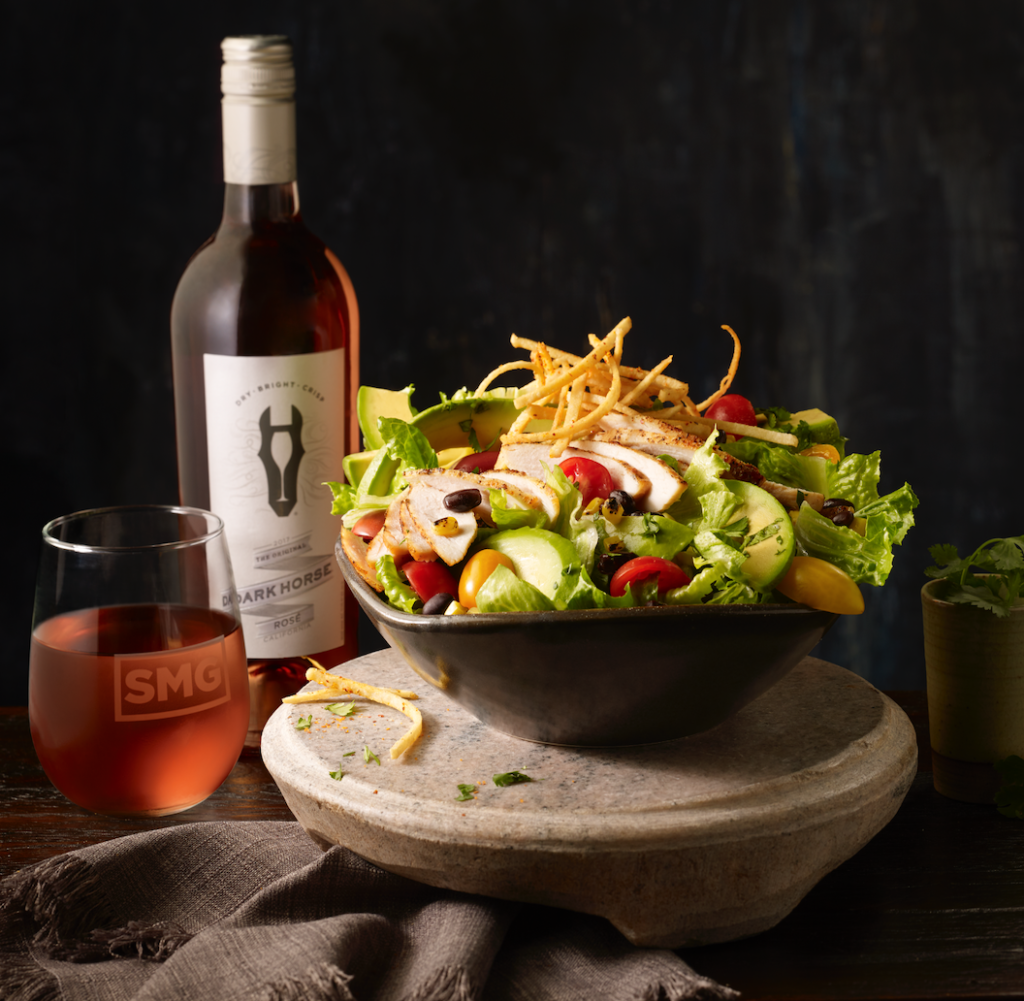
“Making sure that we have the right breadth and depth of wine choices becomes an important part of efficiently managing inventory,” adds Novak. “We’ve found that our guests who enjoy wine are passionate about what they drink. They care about a brand or type of wine more so than a recommendation for a wine and snack pairing. As such, we place our focus on the variety of wine offerings versus pairings.”
“We do not have one varietal of wine that works for all of our theater guests,” Novak says, “so we have made the decision to offer a combination of brands and varietals from Gallo, Terlato, Jackson Family, and more. From an entry-level wine to a more sophisticated taste, we have offerings and price points that meet the needs of our various guests. The wines we serve range from common to exclusive, and the price points are arranged by tiers. A 6-ounce size, entry-level wine starts at $7, whereas a 9-ounce. size that is more refined is approximately $15. In addition, we offer canned wine through our concession stand at select theaters, and full bottles of wine are available for sharing at bar locations.”
As anyone who has glanced at the deep end of a wine list at an upscale restaurant can attest, pricing can be an intimidating barrier to entry for patrons. Larry Etter suggests studying a location’s market and demographics when building a wine list, “getting as much intel from the wine distributors as possible to offer the highest value—not just the least expensive wines. My opinion is no theater should offer cheap wine—we are competing with the neighborhood restaurants and bars; we have to be equal to or better than them. We need to offer high-quality vintages at fair prices. Theater patrons are willing to pay between $10 and $15 per glass—a 5-ounce pour gives you five portions per glass. You can get high-quality wines in that medium price range.”
Pricing has been an important component of Studio Movie Grill’s wine strategy. “Our best-selling wine is our house wine at $7 a glass, which is very competitively priced on the menu, though we do sell quite a number of wines in the $10 range,” says Michels. “Also highly popular is our 25 percent-off bottles of wine on Friday and Saturday nights.”
Sharing a bottle is common at dine-ins like Studio Movie Grill. At Showcase Cinemas, bottles are offered at dine-in locations, but sales are mostly driven by the glass. “Our lobby bars do exceptionally well with wines by the glass, as movies are a social event,” says National Amusements’ Micalizzi, who reports that wine sales at the circuit perform well against beer and spirits and account for more than 30 percent of the greater category. “Our customers have many options for a meal as part of their moviegoing experience, but the social aspect and comfort of our lobby bars and lounges make it quite inviting for guests to sip on a glass and converse with their friends and family. Certain genres of film attract an audience that is likely to enjoy a glass of wine, and being able to offer that to them at many of our locations enhances their overall experience.”
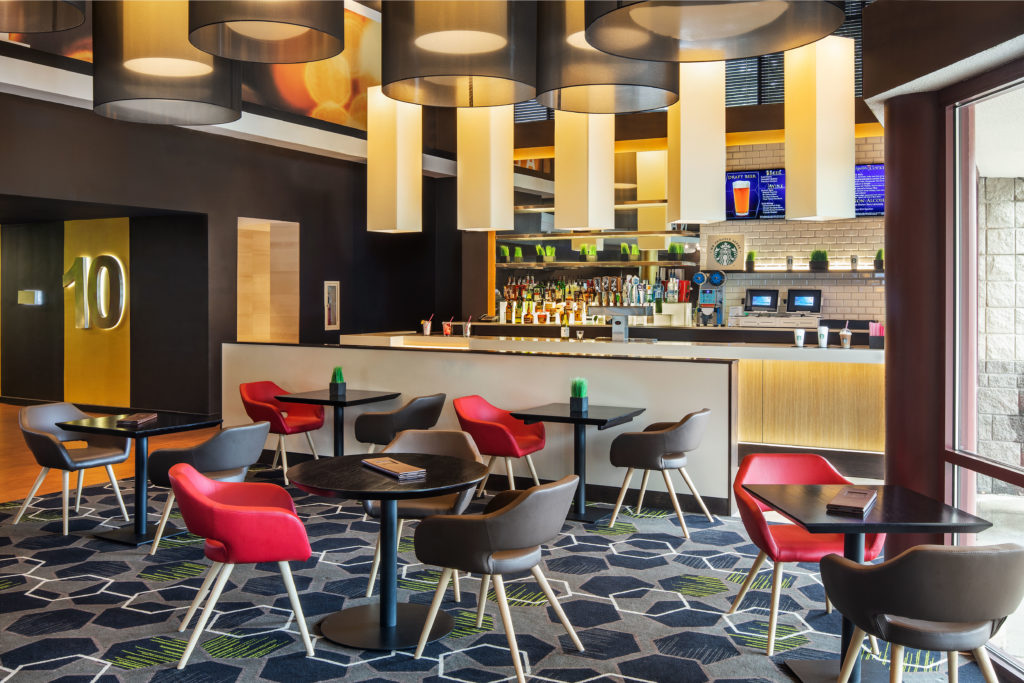
As opposed to concessions staples like soda, popcorn, and candy, wine’s success at cinemas relies largely on its demographics, according to Etter. “We have a theater where 75 percent of all alcohol sales come from wine. Other locations have different demographics [where] wine is lower than 30 percent of the total sales mix,” he says. “As a general observation, wine equates to about 35 percent of the sales mix in [Malco’s] adult-beverage sales. Wine has been accountable for an average 8 percent increase in per capita sales.”
Wine is one of the many enhancements to moviegoing that has grown in recent years, as cinemas elevate the standard of the theatrical experience as an out-of-home entertainment. Recliner seating, premium large format, and expanded menus have all contributed to this effort. Wine, as its own category, shows plenty of potential for continued growth in the coming years.
“Wine at the movies is here to stay,” says Micalizzi. “I think it will continue to perform and grow at a nice pace. Wine knowledge and our guests’ passion for wine both out-of-home and in-home are continuing to push the category forward. The opportunity to expand our wine offerings through our menus and innovate with wine-based cocktails and seasonal sangrias allows us to keep the category fresh and entice new audiences.”
The post The Perfect Pairing: As Cinemas Reopen, High-Margin Concessions Are Gaining Renewed Appreciation. Could Wine Emerge as One of Cinemas’s Post-Pandemic F&B Trends? appeared first on Boxoffice.
from Boxoffice





0 comments:
Post a Comment